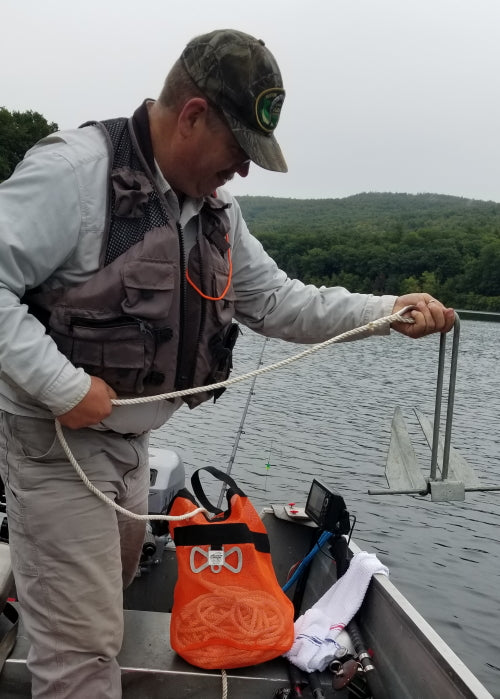Anchor Rope Size for Your Boat
Posted by ANCHOR-CADDIE.COM STAFF

Choosing the Right Anchor Rope Size for Your Boat
When it comes to anchoring your boat, having the right size anchor rope is crucial for ensuring the safety and stability of your vessel. The anchor rope, also known as the anchor line or rode, plays a vital role in keeping your boat securely in place.
Factors to Consider
The size of the anchor rope you need depends on several factors:
- Boat Size: The length and weight of your boat will determine the strength and diameter of the anchor rope required. Larger boats will require thicker and stronger ropes to handle the increased load.
- Water Depth: The depth of the water in which you will be anchoring is another important consideration. Deeper waters will require longer anchor ropes to ensure proper anchoring.
- Boating Conditions: The type of boating conditions you typically encounter should also influence your choice of anchor rope size. If you frequently anchor in rough or windy conditions, a thicker and stronger rope is advisable to withstand the additional stress.
Understanding Rope Diameter
Anchor ropes are available in various diameters, typically measured in inches or millimeters. The diameter of the rope affects its strength and durability. As a general rule, a thicker rope will be stronger and more resistant to wear and tear.
It is recommended to consult the manufacturer's guidelines for your specific anchor to determine the appropriate rope diameter. The guidelines will consider the boat size, weight, and other factors to provide a suitable rope size recommendation.
Considerations for Rope Material
Anchor ropes are made from different materials, including nylon, polyester, and polypropylene. Each material has its own strengths and weaknesses:
- Nylon: Nylon ropes are known for their elasticity and shock-absorbing properties. They are highly durable and offer excellent resistance to abrasion. Nylon ropes are a popular choice for most boaters.
- Polyester: Polyester ropes are strong, UV resistant, and resistant to stretching. They are less elastic than nylon but offer good overall performance.
- Polypropylene: Polypropylene ropes are lightweight and floatable, making them suitable for small boats. However, they have less durability and are not recommended for heavy-duty anchoring.
Maintaining Your Anchor Rope
Proper maintenance of your anchor rope is essential for its longevity and reliability. Here are some tips to keep in mind:
- Regularly inspect your anchor rope for any signs of wear, fraying, or damage. Replace it if necessary.
- After each use, rinse your rope with fresh water and allow it to dry completely before storing.
- Avoid exposing your rope to excessive sunlight or harsh chemicals, as this can weaken the material.
- Store your anchor rope in a cool, dry place away from direct sunlight.
Conclusion
Choosing the right anchor rope size for your boat is essential for safe and secure anchoring. Consider your boat size, water depth, and boating conditions when selecting the appropriate rope size. Consult the manufacturer's guidelines for specific recommendations, and always prioritize regular maintenance to ensure the longevity of your anchor rope.


